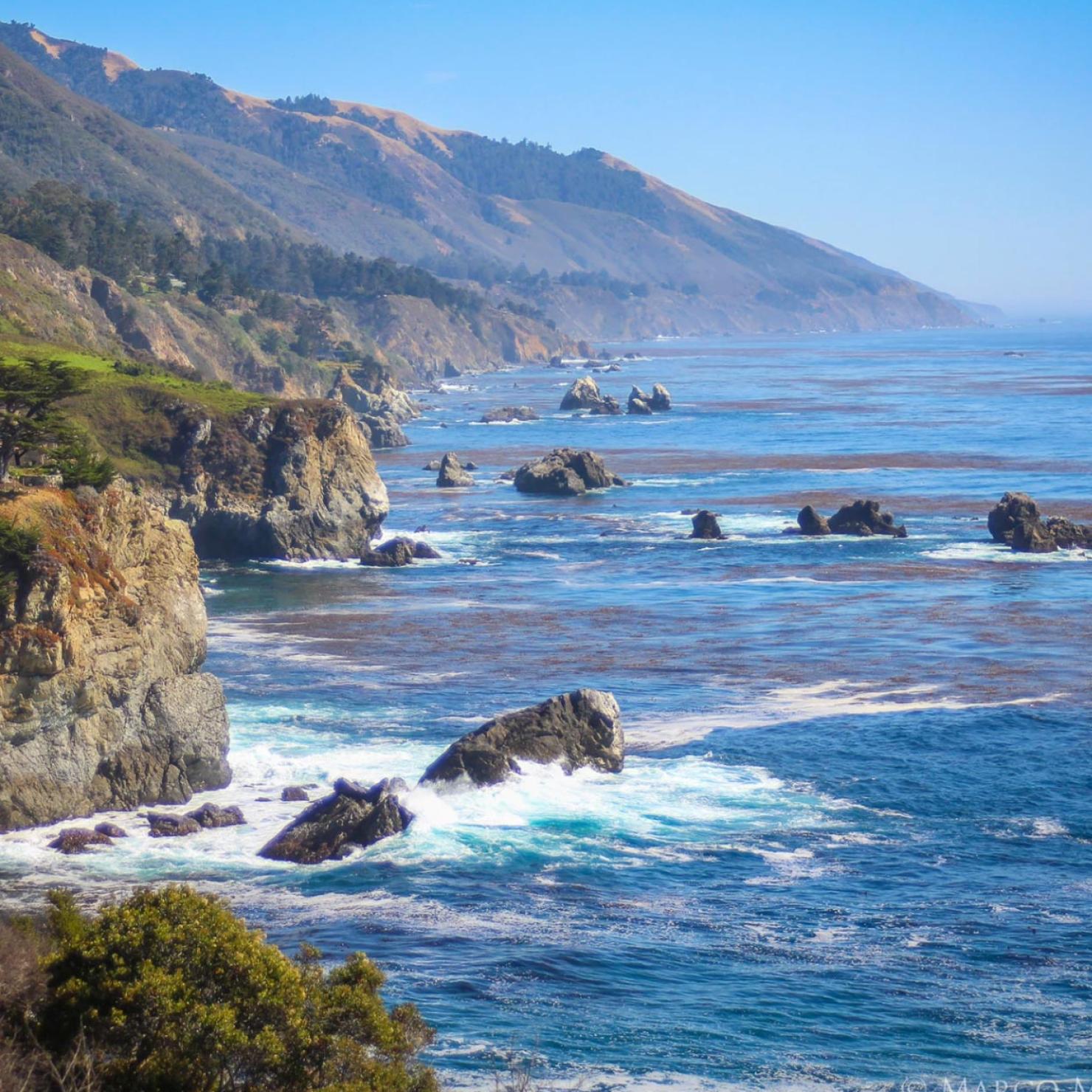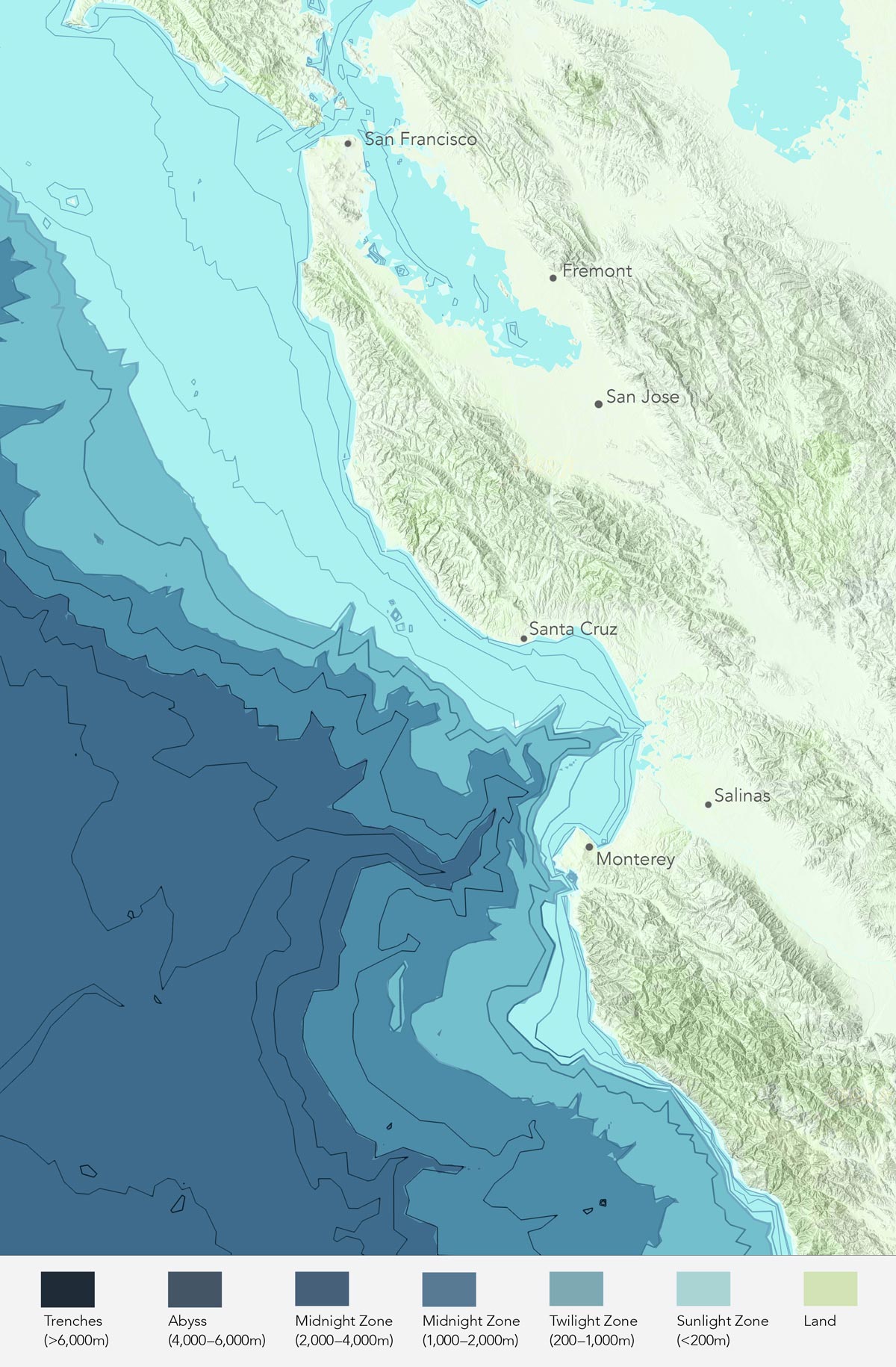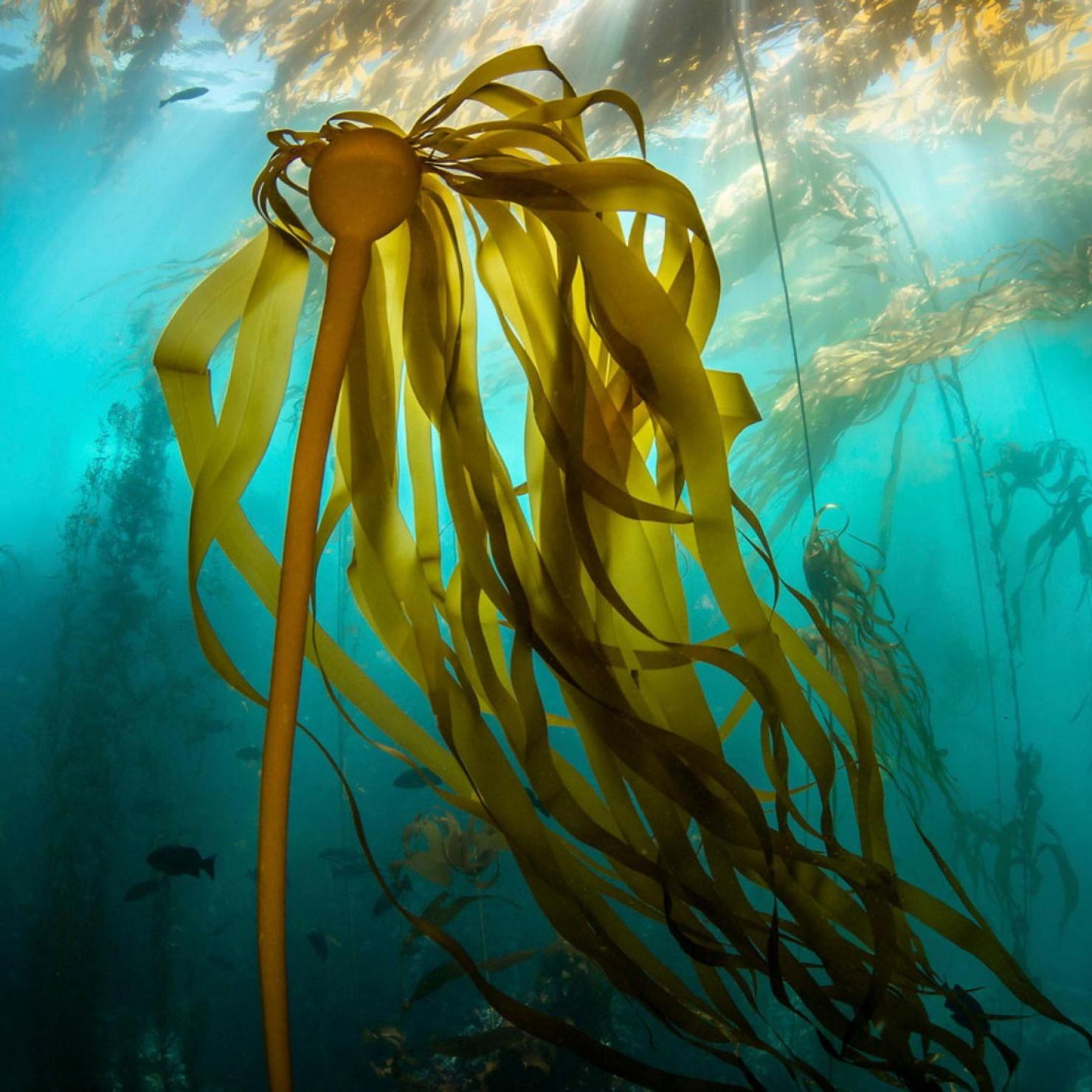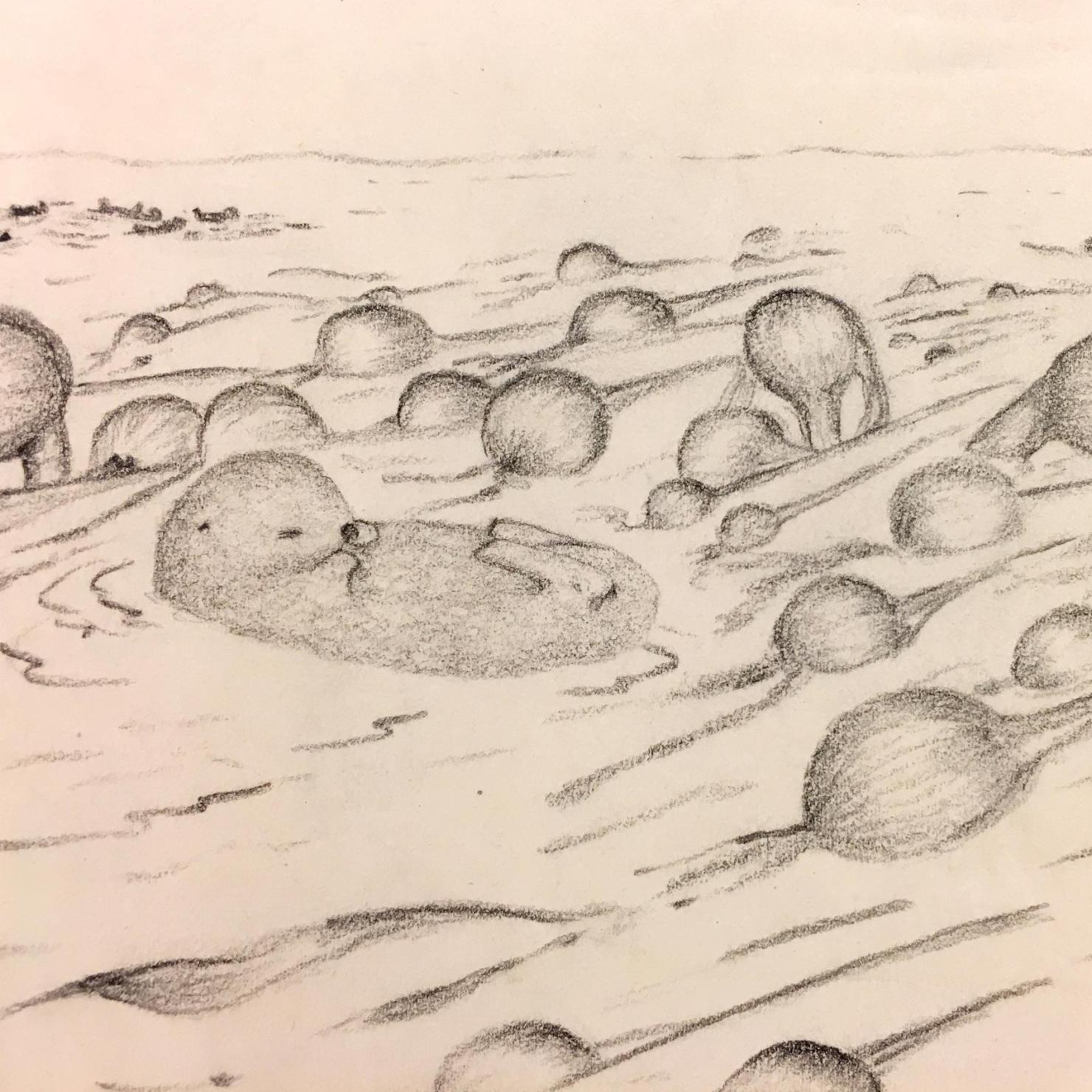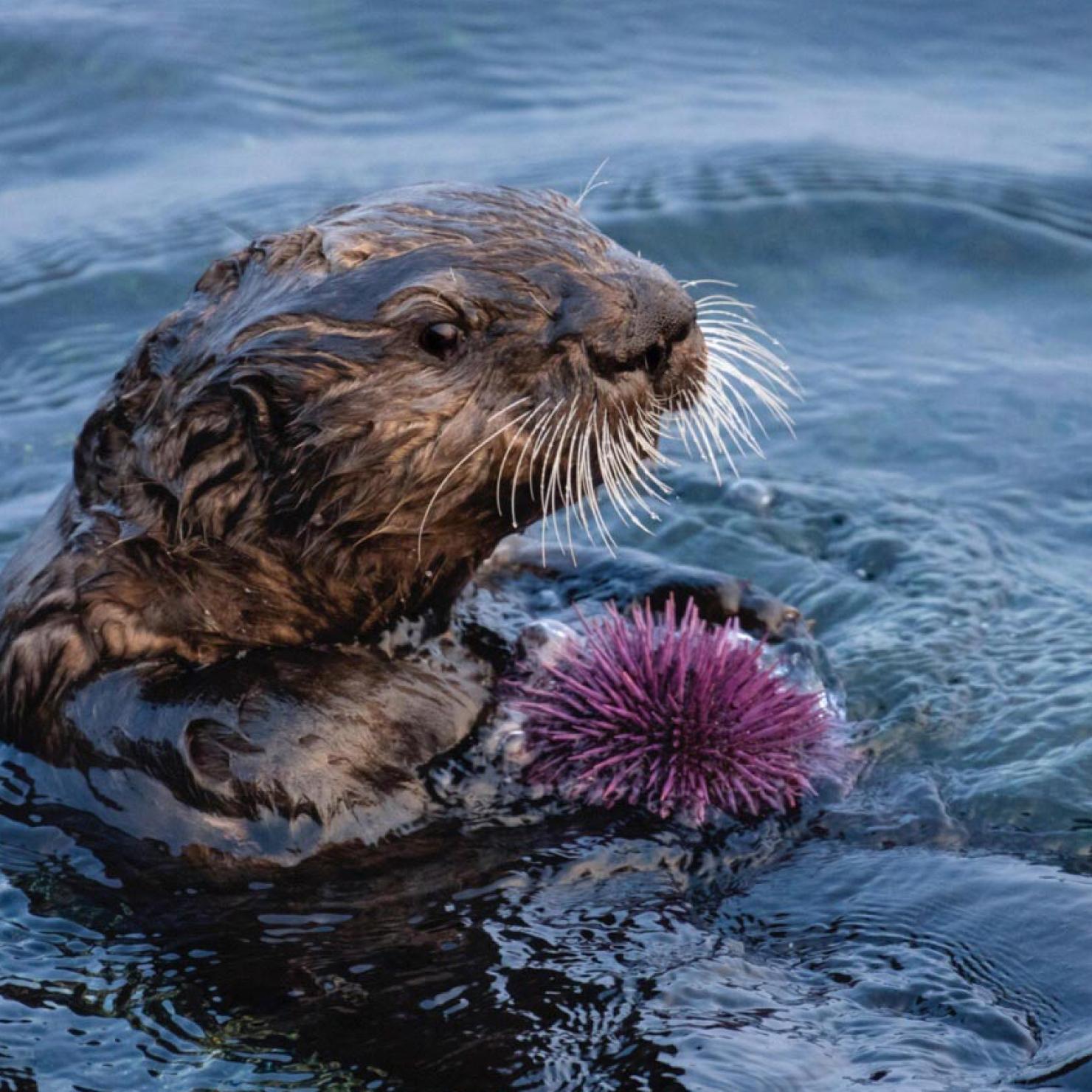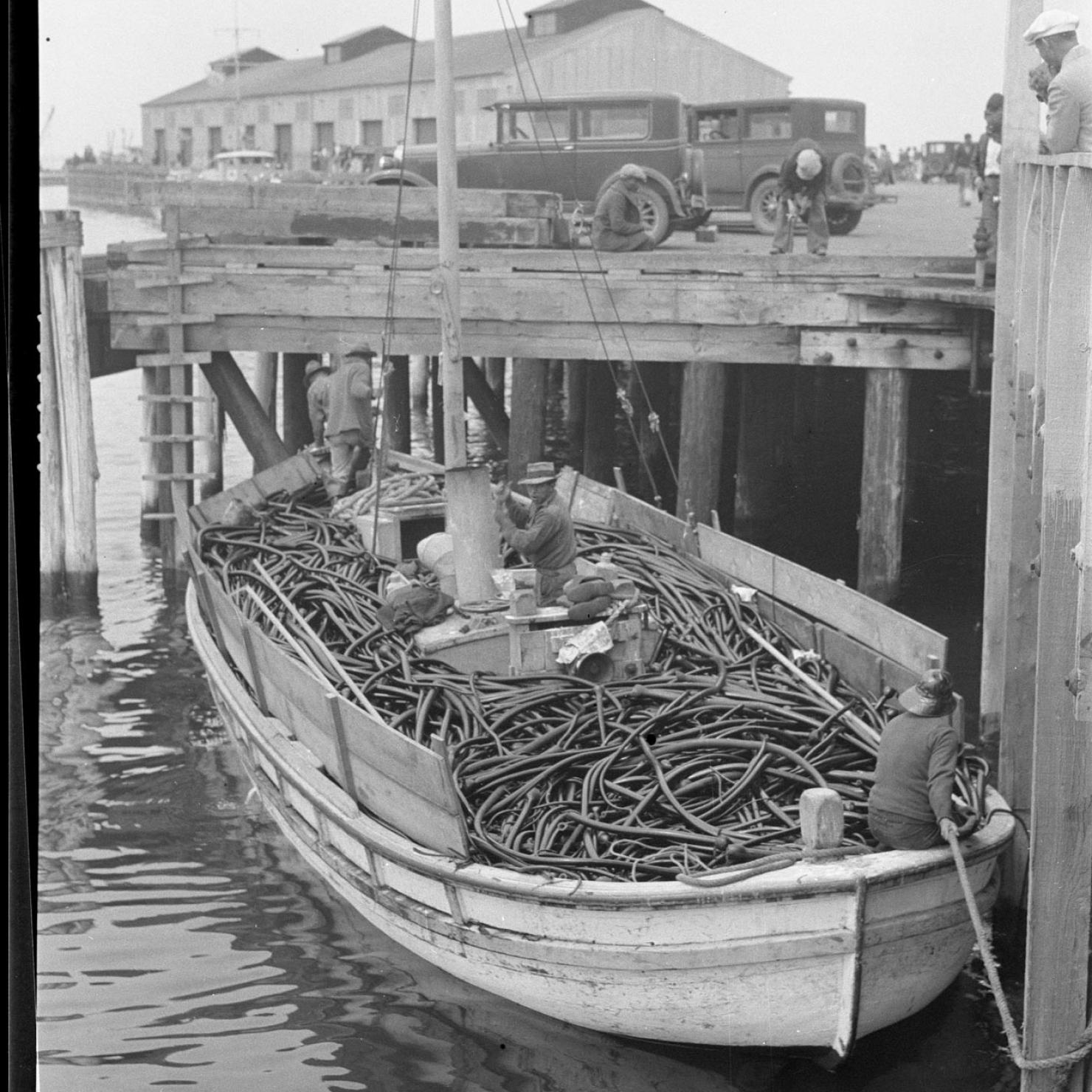The great Monterey Canyon stretches from the deep ocean towards the center of Monterey Bay, like a dragon, its snout dissolving into the Elkhorn Slough, and its leg stretching along the southern side of the Monterey Peninsula with claws extending into Carmel Bay. The magnificence of this underwater canyon is clearly viewed on the bathymetric charts—maps showing the contour of the ocean floor—but it is otherwise invisible to us shore huggers. The effects of the constant mixing of deep-water nutrients from the canyon into shallower zones are clear as soon as you venture to the shore and experience the intense richness of the Monterey Peninsula tide pools, or get a chance to snorkel, dive or kayak just offshore. The abundance and variety of species of seaweed is staggering! These are some of the most biodiverse waters on earth, where every fishery imaginable has flourished and faltered—from abalone, to sardines, to yes, even a bull kelp fishery! In 1992 the Monterey Bay National Marine Sanctuary was established to protect this richness of ocean life. The Chumash Heritage Marine Sanctuary will soon extend this stewardship to the south.
For bull kelp, this is where it mingles most intently with its cousin, giant kelp; where the ranges of these two powerhouse kelps intersect in great swaths of canopy forming kelp beds.




